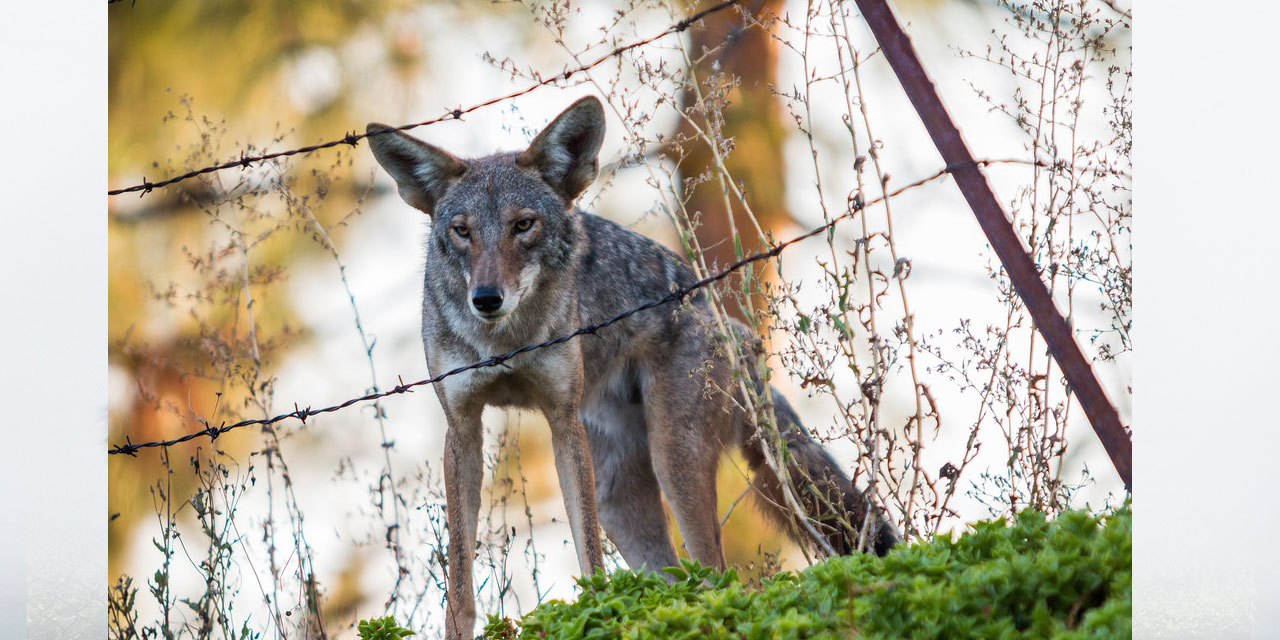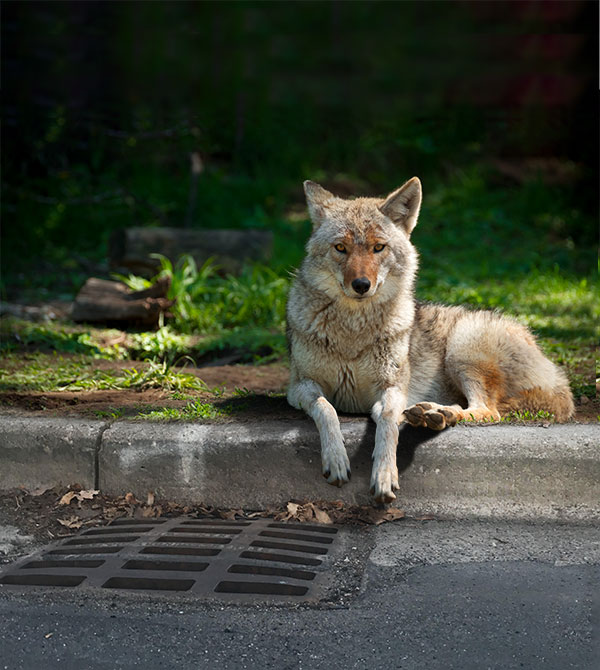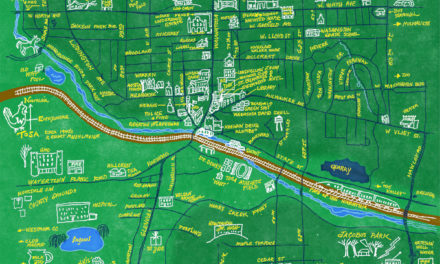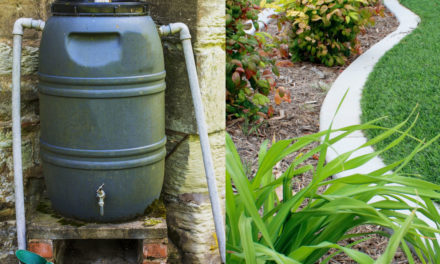By Chris Haise
The idea of “wild” animals usually makes one think of barren country, deep woods, and jungles. However, even urban and suburban areas can be home to creatures we would most expect to see in the pages of National Geographic.
Recent sightings of cougars in Brookfield has brought new light to the presence of seemingly out of place predators in our residential areas of Southeastern Wisconsin. While the awareness of cougars has come to the forefront of late, the issue of urban coyotes in our communities has been prevalent for some time.
While the rate of development of roads and buildings in Tosa has minimized the quality of green spaces, experts say this does not have a large impact on the existence of coyotes. This is due to one of the coyote’s biggest strengths — adaptability.
TERRITORY AND DIET
The territory of coyotes does not need to be large, or even continuous. Coyotes are able to thrive in areas with minimal green spaces because they will naturally adapt and expand their territory to include enough places to hunt.
Inside of the coyote’s determined territory are the dens they call home. Unfailingly creative, coyote dens have been found hidden in parks, disguised in river beds, even in manmade areas like sewers. According to National Geographic, a tagged coyote denned and had a litter of pups in the parking lot of Soldier Field in Chicago, showing once again that the Bears can’t stop anything.
The coyote will often den in multiple locations to mask its movements and habits from both predators and prey, and even have multiple entrances for a single den. Secrecy is of the utmost importance, as the purpose of their hidden dwellings is to ensure the safety of the pack, especially their offspring. If a den is disturbed or detected, the pack will often immediately abandon it to make a new, more secure den.
Of course, these animals would prefer moderately wooded and forested locations, such as large parks or golf courses, but even in absence of those the coyote will make do. One reason for this is the density of food sources, both hunting and foraging, that can be expected in urban areas. Despite the small size, there is plenty to eat for coyotes.
Coyotes are omnivores, and extremely opportunistic. Studies show that coyotes are able to maintain a natural diet in urban areas, finding fallen fruit and other vegetation. Even within their patchwork of urban green spaces that make up a territory, coyotes manage to find small rodents, reptiles, rabbits, even deer.
This is in stark contrast to the image of the coyotes as a scavenger, harassing and endangering pets between dumpster dives. Studies that identify the urban coyote’s diet show evidence of human garbage and felines a combined three percent of the time.
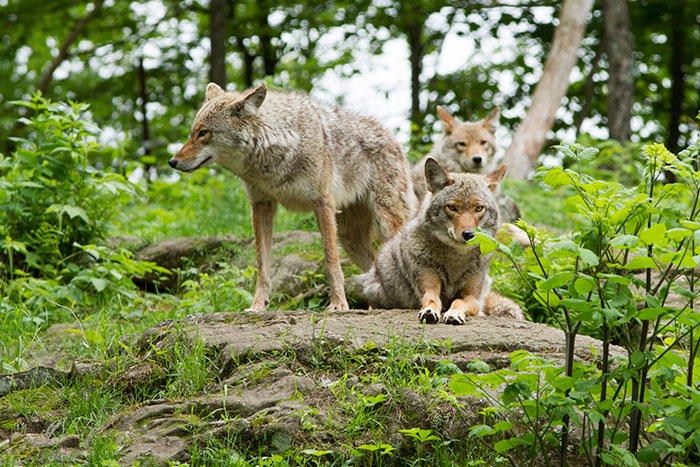
SOCIAL BEHAVIOR
Coyotes are often seen alone, however they are still very social creatures. While coyote packs are relatively small compared with other pack creatures, an area with sufficient resources can support packs of five or more adult coyotes.
Packs usually consist of an alpha male and female along with the youngest pups of their litter. Though they hunt and roam alone or in pairs, more than half of coyotes dwell in a pack environment.
Solitary coyotes are not uncommon and are generally youngsters. Young coyotes travel alone, often to find a mate, a new pack, or new territory. An older solitary coyote likely was an alpha in a pack but lost its mate. These older loners may assimilate into a new pack, if the pack has sufficient territory and food resources.
Finding a mate is of particular importance for coyotes, as they are monogamous creatures that mate for life. Studies have found next to no evidence of polygamy among coyotes, even when different packs live in close proximity.
Monogamy has many benefits for the coyote. Because they do not rampantly reproduce, a couple can adjust their procreation to best fit the factors of their environment. When food is ample, coyotes tend to have larger litters.
There is also a high survival rate among coyote pups, even in larger litters, due in part to the monogamous presence of both parents. Female coyotes necessarily have a devoted mate to help ensure the offspring’s survival.
A NATURAL PREDATOR
As an apex predator, the presence of coyotes is a sign of a thriving ecosystem in an area. It may seem that the coyote has become more prominent in recent years, and the work of many urban ecologists would support this notion.
Due to a lack of obvious predators like wolves and bears, certain animals have thrived in so-called “fringe” ecosystems like those often created in urban areas.
The reemergence of the coyote is in large part a natural response to the recent and prolific rise of rodents, deer, rabbits, geese, and many other fringe-dwelling creatures. In other words, coyotes are filling an ecological “gap” created by urbanization. The presence of coyotes indicates a thriving and balanced ecosystem, with the coyote playing the role of predator in the new, emerging food chain.
One large way the coyote helps to control the population of other animals is through their eating habits. Coyotes do not often hunt adult animals in large numbers, such as deer or geese. Rather, coyotes attack fawns and raid goose nests for eggs. This serves as a biocontrol by slowing population growth instead of a sheer reduction in numbers.
Another benefit to a natural and healthy coyote population is the effect on feral cats. We have already discussed that coyotes do not generally pose a threat to cats, domestic or wild, but they do impact the behavior of these animals.
Both being naturally territorial, the presence of coyotes in an urban area dictates the behavior of wild cats in the same area. Cats steer clear of the patchwork territory used by coyotes, which not only prevents coyotes from preying upon cats, but allows other creatures, like some birds, to thrive because of the absence of those same feral cats.
So while the coyote is not a natural predator of cats, its presence is beneficial on the environment as a whole in how it dictates feline activity, which can be disruptive if left unchecked.
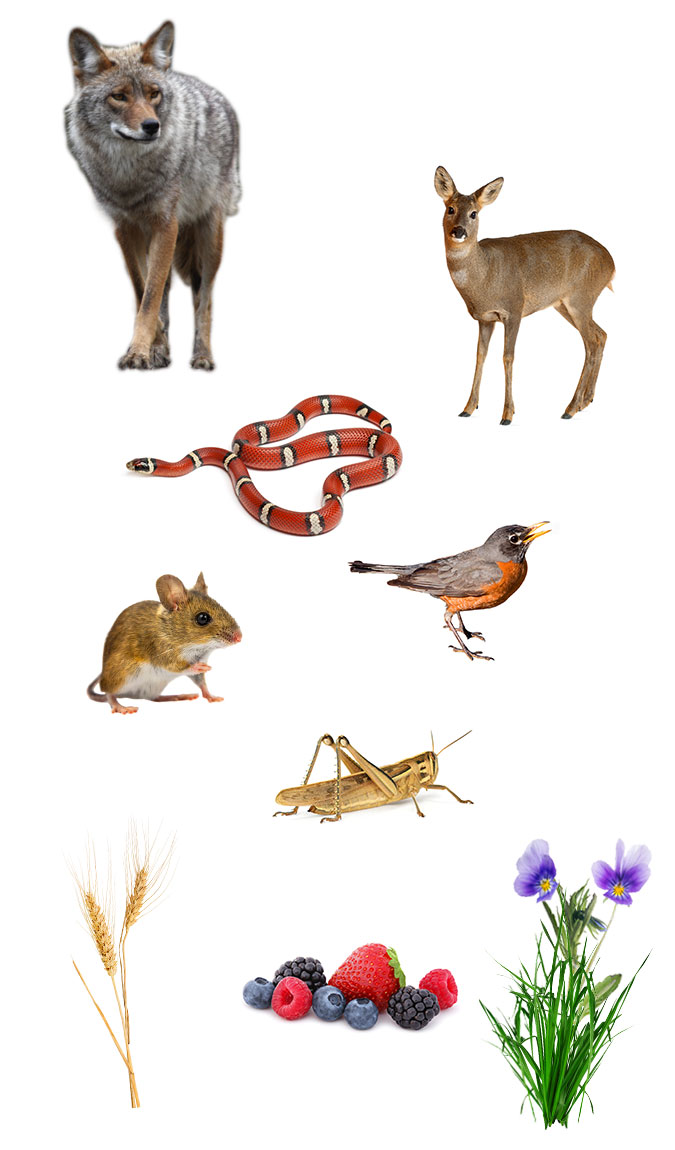
COHABITATING
Coyotes are often thought of as nocturnal, but while they are very active at night, they naturally adapt their behavior to suit their needs. According to the Urban Coyote Initiative, which works to provide education about coyotes, the recent trend towards night hunting is in fact a response to avoid humans, of whom they are naturally wary.
A common misconception is that coyotes active during the day is a sign of overpopulation in the area, or even illness in the animal, but this is not the case. Daytime is the normal hunting time for coyotes. If needed, especially during birthing season, the coyote will be more active during the day when more food is required.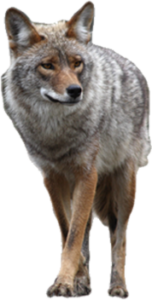
Although there have been sad instances of domestic cats and dogs being threatened by coyotes, they are largely able to peacefully coexist in an urban environment. Experts say the best way to keep the coyote population behaving normally is to avoid feeding them, whether intentionally or accidentally.
While there is worry that coyotes may overpopulate an area, this is largely unfounded. As previously stated, coyotes resourcefully seek prey in their piecemeal territories and responsibly reproduce. Because of this, the coyote population is in natural balance with its environment, taking into account factors like food resources and available space.
Residents can do their part by taking care to remove food sources from outdoor areas. Pet food left outside could become part of a coyote’s diet, as could seed from a bird feeder. Removing these sources and properly disposing of fallen fruit and vegetation from a yard will keep coyotes in a more natural position.
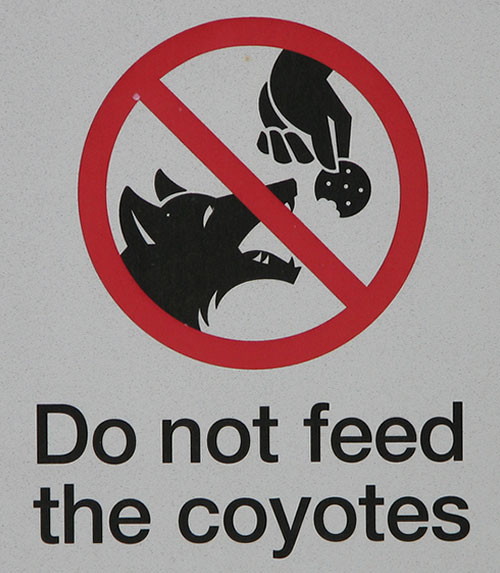 Remember, the population is dependent on the resources in an area for balance, so if citizens refrain from introducing additional unnatural food resources, the number of coyotes in an area will reflect that effort.
Remember, the population is dependent on the resources in an area for balance, so if citizens refrain from introducing additional unnatural food resources, the number of coyotes in an area will reflect that effort.
Another important reason to be vigilant when it comes to feeding coyotes is to ensure that coyotes remain wary of humans. Just like the reasons behind the “Do Not Feed the Animals” signs at the zoo, feeding coyotes outside of their natural habits as predators can drastically change their behavior. In fact, in most cases where coyotes became an issue it was discovered that they had been fed from unnatural sources. By avoiding unwanted interactions, humans can ensure that coyotes continue to coexist peacefully.
The Urban Coyote Initiative stresses that the best way to safely control the population of coyotes is to allow natural effects to take hold. The predatory and territorial instincts of coyotes all but ensures population stability.
This indicates that allowing coyotes to naturally coexist in urban areas is the only viable path forward. The forcible removal of coyotes only creates a vacuum that may have the reverse of the desired effect and introduce more wildlife issues into the area.
Even with vigilance it is possible that issues surrounding urban coyotes will arise, and as such it is important to know what to do if placed in a challenging situation.
PERSONAL SAFETY
As with all wildlife, be sure to alert the proper authorities, but also be aware of what you can do in the moment to maintain safety.
Coyotes are naturally timid around humans, and this can be used to your advantage when encountering coyotes. Make yourself as big as possible and as loud as possible. Stand your ground, and if the coyotes still advance, back away slowly. Do not turn your back on the animal. Throwing things in the direction of the coyote, or having deterrents like noisemakers and whistles can be advantageous.
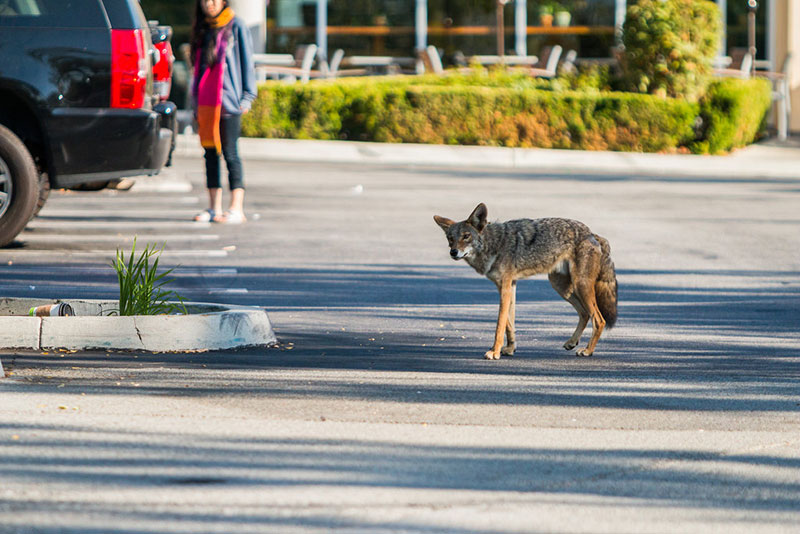
Keep watch on pets that are fed outdoors, and always clean up the food immediately afterwards to avoid inadvertently feeding coyotes. There are many resources available you online that can provide further insight and guidelines to safety when cohabitating with coyotes.
FOCUSING ON THE POSITIVES
One need not go further than the picturesque scenes along the Menomonee River Parkway to see that Wauwatosa is a naturally lovely place to call home, and many citizens put forth a great deal of effort to ensure that it remains so.
The Urban Coyote Initiative states that the presence of coyotes can be considered a “thumbs-up” for the quality of a city’s urban ecology, so the emergence of the urban coyote should be seen as an endorsement of our hard work.
Problems undoubtedly arise in any environment, but with some effort we can all ensure that the coyote plays a healthy role in the upkeep of our beautiful community.

